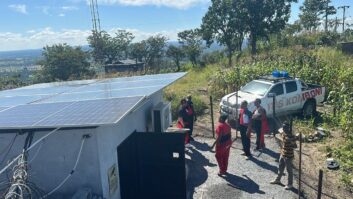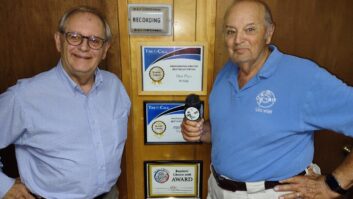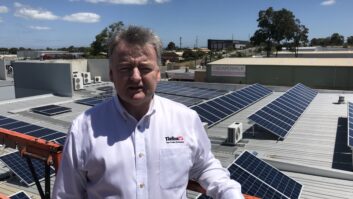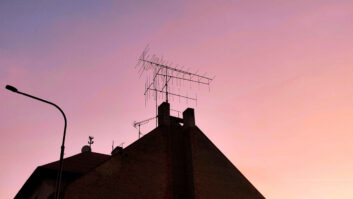Solar cycles last, on average, 11 years. Solar Cycle 24 may have started this month.
TV Technology contributor Doug Lung writes:
Since Solar Cycle 23 peaked between 2000 and 2003, solar activity has been declining. Amateur radio operators and shortwave listeners have been closely watching for the new cycle to start, knowing increasing solar activity will lead to higher maximum usable frequencies (MUF) and better high-frequency propagation. Satellite operators and TV engineers at stations on low VHF channels are also watching the solar cycle, but their concerns are that solar storms could damage satellites and higher MUF could allow distant stations to interfere with TV reception.
The group most interested in the solar cycle is the scientists studying solar physics. They became excited when a knot of magnetism popped over the sun’s eastern limb on Dec. 11. Solar physicist David Hathaway of the Marshall Space Flight Center said the knot may not look like much, but “this patch of magnetism could be a sign of the next solar cycle.”
He explained, “New solar cycles always begin with a high-latitude, reversed polarity sunspot.”
“Reversed polarity” means a sunspot with opposite magnetic polarity compared to sunspots from the previous solar cycle. “High-latitude” refers to the sun’s grid of latitude and longitude. Old cycle spots congregate near the sun’s equator. New cycle spots appear higher, around 25 or 30 degrees latitude, according to the NASA Science news release. More time is needed to see if this sunspot really is the start of Solar Cycle 24.
The release said many forecasters believe Solar Cycle 24 will be big and intense.
“Peaking in 2011 or 2012, the cycle to come could have significant impacts on telecommunications, air traffic, power grids and GPS systems,” NASA said. Due to the increased use of telecommunications, there is concern the coming cycle could have a greater impact than the previous cycle. We won’t have to worry about this for a few more years, however, as the solar cycles usually take a few years to peak.
“We still have some quiet times ahead,” Hathaway said.
— TV Technology







